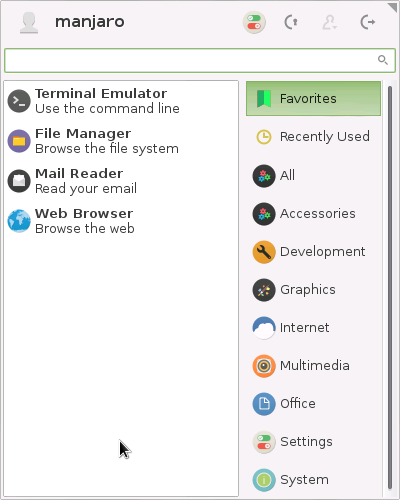Hands-On: More adventures with Manjaro-ARM for the Raspberry Pi 2

In my previous post I celebrated the announcement of Manjaro-ARM Linux for the Raspberry Pi 2. I installed it on my Pi 2 with no problems, and I was ready to continue experimenting and investigating with two major objectives - how complete/stable is it, and what are the chances of getting the i3 window manager working on it?
I'm very pleased to say that I have made good progress on both of those points, and after a couple of days (well, evenings) working with it I am even more pleased than before. Let's look at those two things in order.
How stable is it? Again, I can't stress this enough, the current release is Alpha1. It's very preliminary. But having said that, I would add that I have found this to be a very stable Alpha release. I've been doing quite a bit of investigation, and poking around in some fairly obscure corners, and I haven't had anything crash on me yet. So I would give it high marks for stability.
How complete is it? Again, as I mentioned in my previous post, this is a bare-bones Xfce installation with "several useful applications". I think that I would rephrase that now, and say "without very many useful applications". Don't panic, and don't criticize, I have no doubt that they will all come along in the subsequent alpha and beta releases. But right now, there's not much, even in some low-level areas.
For example, the wired network connection works just fine, but there is nothing to support wireless networking yet. No network manager, or other user-friendly configuration utilities. I have tried all three of the USB wi-fi adapters that I have - the "Official Raspberry Pi", the Broadcom "USB Hub and Wi-Fi" and another Broadcom unit - and all of them were recognized and configured with no problem. I could list available networks (iwlist wlan0 scan) and see everything around here. But actually getting configured and connected to a network with encryption is a step too far right now.

At the user-application level, the Xfce menu is prepared for the usual set of applications, so it will be interesting to see how this fills in as the development continues.
Now for the second point, and the one that I am really excited about: getting the i3 Window Manager working. As a first shot at this, rather than reload with the Manjaro-ARM Minimum version, I would try adding i3 to the existing Basic (Xfce) version. That would at least give me an idea whether I had a decent chance of success, or if I should hold off a while longer and wait for the developers to get more done.
The really, really good news is shown by this screen shot:
Holy Cow, is that ever good! If things continue to be this easy, I'm going to get spoiled!
Once again (I know you're tired of hearing this), this is an Alpha release, and I have only installed the minimum packages necessary to get i3 running. But wow, is it ever good, and wow, is it ever fast!
The packages I have installed so far are:
- i3-wm - the window manager itself
- i3lock - the screen lock utility
- i3status - the taskbar status utility
- dmenu - the launcher/menu utility
Once these are installed, all you need to do is configure Manjaro to start i3 instead of Xfce on startup. That's the point where users who are accustomed to more common systems which have session managers might stumble.
Manjaro-ARM boots directly to the Xfce desktop, so I figured I would just logout, get the login screen and then tell the session manager to start i3 instead of Xfce. Except, when I logged out it just recycled and logged me right back into the Xfce desktop again. Oops.
I looked around to see what kind of configuration it had, and it didn't take me long to realize that there is no session manager running. The Raspberry Pi just boots and starts the X11 display server, and off you go. That means that the startup configuration is in the ~/.xinitrc file, and sure enough the last line in that file is:
exec startxfce4
So, that's easy enough to change; just comment out that line, and add this one
exec i3
Note, you could delete the startxfce4 line, but if you are trying this out the way I am, you're likely to want to switch back and forth between i3 and Xfce so it is easier to just comment/uncomment as necessary.
Then just logout again, and this time when the X server starts, you will get the i3 Window Manager! Hooray!
So now I am at the point with Manjaro-ARM/Raspberry Pi 2/i3 that I was at two days ago with Xfce. It works, and it seems quite nice and stable. It is not crashing around my ears constantly (actually not at all, at least yet), but it is also still missing a lot of important pieces. Time to poke around, do some investigation and experimentation, and see how it all goes.
Looks like it will be an interesting weekend!
Read more about Linux and open source:
- Hands-on with Kali Linux Rolling
- How to customise your Linux desktop: MATE
- How to customise your Linux desktop: Cinnamon
- How to customise your Linux desktop: Xfce
- Hands-on with openSuSE Leap RC1: A walk through of the installer
- Hands-on: KaOS Linux 2015.10
- Thus versus Calamares: Comparing Manjaro 15.09 installers
- Upgrading my Linux-Windows multi-boot system to Windows 10
- Hands-on: Linux UEFI multi-boot, my way
- Hands-on: Linux UEFI multi-boot, part two